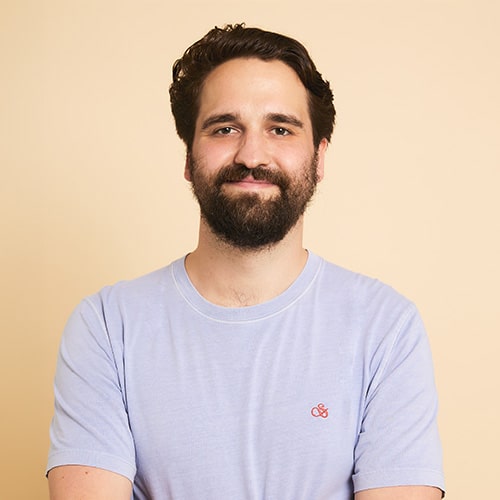Where does my bus or S-Bahn stop and when do I have to get off? For the more than 550,000 visually impaired, 80,000 deaf and 17.1 million hearing impaired people in Germany, this is a major challenge every day. In several projects, we at Innovation Natives have developed app functions that make it easier for target groups to use buses and trains. And this is how it works: On the one hand, the target groups are provided with the information that is also available to sighted and hearing passengers. We have also developed additional assistance systems that make it easier to find the right bus, for example.
The development process consisted of iteration loops in which we were in close contact with the target groups. We conducted exploratory interviews to determine the requirements for accessible passenger communication and developed possible solutions and features for an app. We discussed, reviewed and further developed the new functions with the target groups in accordance with the Lean Development Cycle (build-measure-learn). In this way, we have come closer to a sensible solution step by step. We learned the following lessons from the process, which are also essential for future projects:
- Dialogue instead of desk knowledge
We need to engage in intensive dialog with the target groups and obtain feedback again and again on a topic like this, where we cannot fully understand the reality of life for blind or hearing-impaired people. Otherwise, we only ever make the assumptions on which we base our products from the perspective of people with unrestricted sight or hearing. This means that no part of our product development can be designed at a desk. Consequently, this means that we have to go into the context, i.e. to the bus stops and vehicles, to talk to the target groups about their needs and wishes directly on site. - Rapid progress
We need to achieve benefits for users quickly with our projects. Rapid further development is possible through a step-by-step approach with solutions that build on each other. This enables us to achieve a high level of participation and tangible progress for our target groups. In concrete terms: Every four weeks, we were back at the bus stops with our target groups to discuss and review new solutions. - Neutral mediator
As a service provider, we need to bring disabled people’s associations and transport companies together and get them talking to each other on our platform. As a neutral authority, we can often mediate more easily than would be possible in a direct exchange. This also helps to prevent delays and implement solutions consistently and sustainably. - External expertise
We need to network the right people. It is neither realistic nor desirable to bundle all the impetus and expertise required for product development in the area of barrier-free public transport. This is why we identify and involve external expertise. For example, we are in close contact with mobility trainers, sign language interpreters and accessibility experts. - Quick Wins
We don’t have to reinvent the wheel. There are many sensible and simple solutions to enable accessibility in public transport. It is important to cultivate these “quick wins” and offer them sustainably. This is because our target groups find it particularly annoying when services are discontinued due to insufficient traffic on an app or website. Even if the absolute number of uses of such services may seem low from the perspective of the operating company, they make a big difference for each individual. - Suitable features
We need to communicate in the language of our target groups. Many people who were born deaf describe German sign language (DGS) and not German spoken language as their mother tongue. Accordingly, we can ensure more comprehensible passenger communication if we consider DGS during development and offer it as an alternative to written language for conveying certain information. The same applies to screen readers (e.g. voice over) used by blind and visually impaired people on their smartphones. So when we develop new features, we always have to ask ourselves to what extent they can also be implemented auditorily, tactilely or in sign language.
Wide field
As part of the app development process, we focused intensively on the needs of blind, visually impaired, deaf and hearing-impaired passengers on public transport. In the in-depth interviews, we came across many other areas in which there is a great need to catch up on useful products and services. So there is still a lot to do on the road to accessibility.





